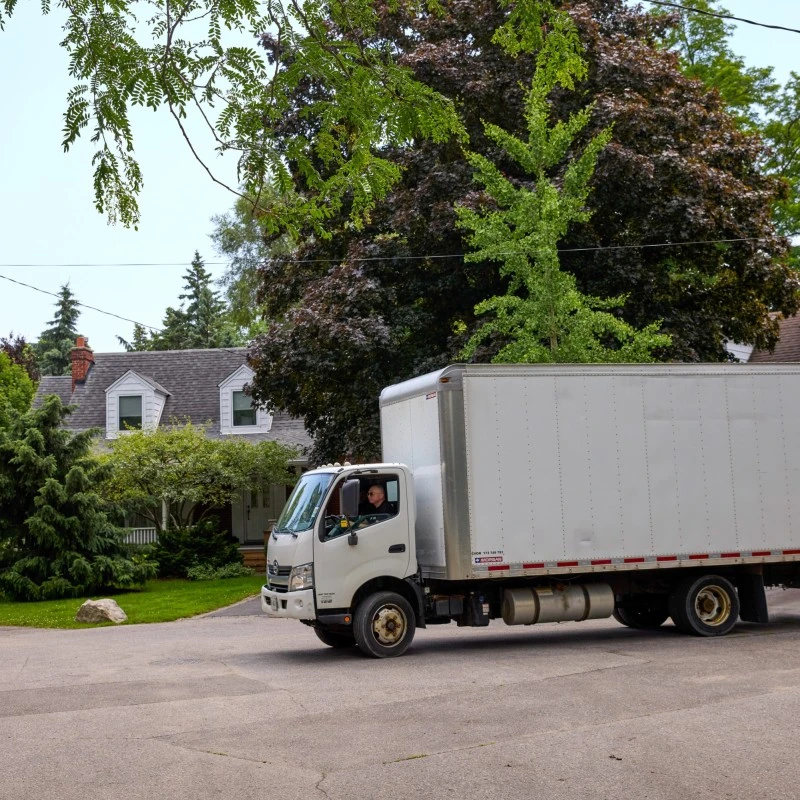Moving checklist and relocation guide in Ottawa


Ottawa has a lot to offer as Canada’s capital, including gorgeous parks and green spaces, world-class museums, and a stable job market. While it may not be the most hip and exciting city, it’s loved by its residents for being a (mostly) walkable city with a low crime rate. It’s relatively affordable and attractive to families, students, and professionals.
Ottawa is for those who prefer a mid-sized city over a sprawling metropolis, giving you the perfect balance of urban convenience with natural beauty. Whether you're drawn by career opportunities, a family-friendly environment, or a high quality of life, Ottawa checks important boxes for potential residents.
If you are thinking about moving to Ottawa, careful planning and preparation can really help streamline the process while saving you time and money. This guide provides practical tips and insights for every step of your move, along with an in-depth look at life in Ottawa. Whether you're budgeting, packing, cleaning, or going through your final moving day checklist, you'll find everything you need to stay organised and ensure a smooth transition.
Introduction to moving day in Ottawa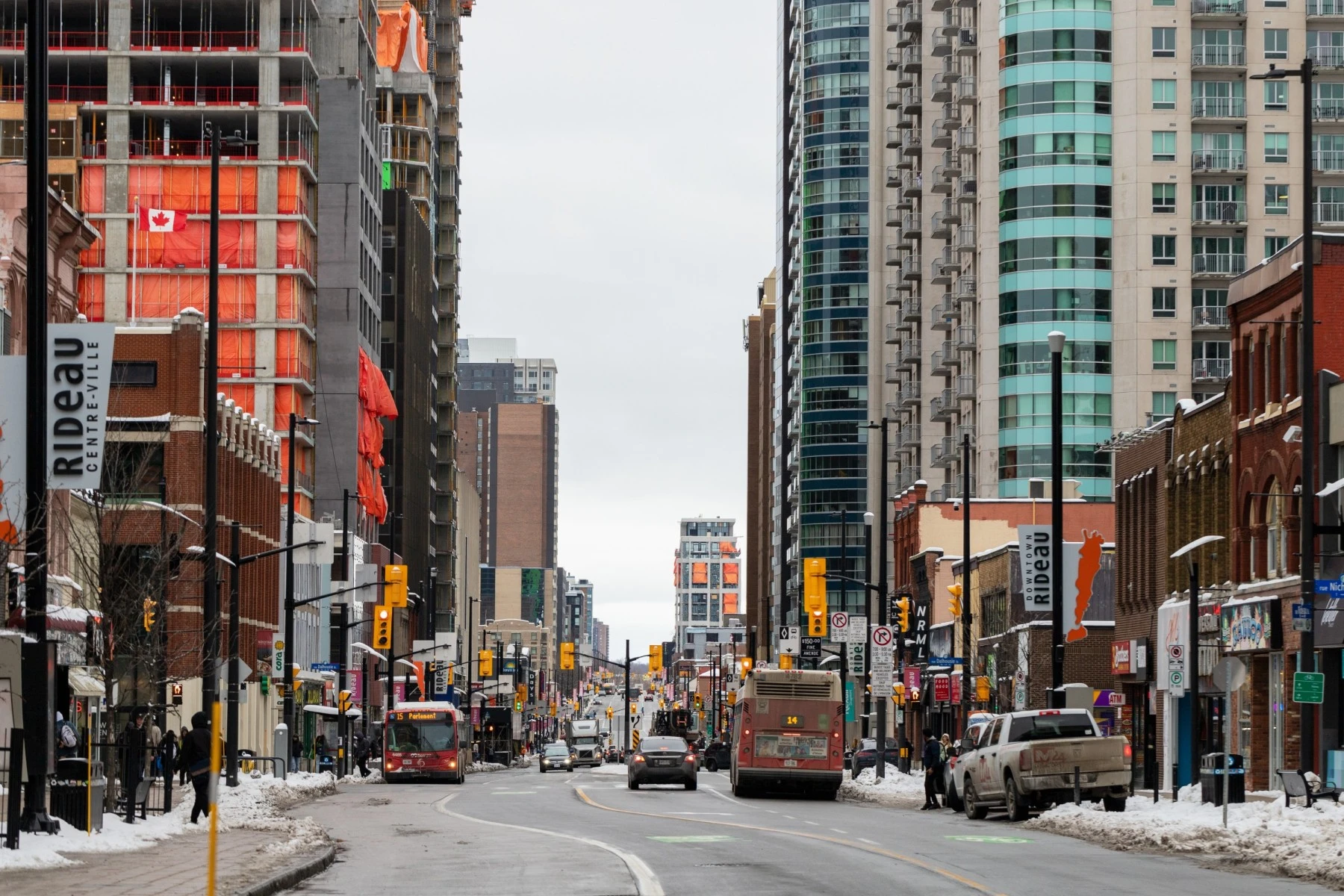
Just like many other cities in Canada, You’ll need to contend with both heat and cold on moving day. Ottawa's climate can make moving challenging. Winter is when snow and ice can create hazardous conditions. Summer moves can be easier, but heat and humidity may still be a factor. Spring and fall offer the most comfortable weather and safest conditions for moving.
Ottawa’s downtown traffic can be congested, particularly during rush hours from 7 to 10 am and 4 to 7 pm. Checking traffic updates and planning your route ahead of time is essential.
Different areas in Ottawa have unique moving challenges. For example, downtown areas usually have limited parking and tighter spaces. The suburbs provide more flexibility, but involve longer travel distances.
If you rely on public transit for daily commuting, consider living close to OC Transpo routes and stations when choosing your new home. Some neighbourhoods are better connected than others. The following neighbourhoods have excellent public transit services:
-
Centretown
-
ByWard Market
-
Sandy Hill
-
Glebe
-
Old Ottawa South
-
Hintonburg
-
Westboro
-
Vanier
-
Alta Vista
-
Heron Gate
-
South Keys
-
Orléans
-
Barrhaven
-
Kanata
These neighbourhoods have little to no public transit services:
-
Manotick
-
Greely
-
Carp
-
Cumberland
-
Dunrobin
-
North Gower
-
Vars
Find reliable moving companies in Ottawa to suit your budget and specific moving needs.
Tips for a smooth moving day
 Take the hassle out of your moving day with careful planning and preparation. Here are a few safety and organisation tips and time-saving hacks that will make the process easier for everyone involved:
Take the hassle out of your moving day with careful planning and preparation. Here are a few safety and organisation tips and time-saving hacks that will make the process easier for everyone involved:
-
Book a moving company as early as possible to secure your preferred date and time. Time management for the win.
-
Plan your route ahead of time, considering the major roads, intersections, and transit options. Apps like Google Maps provide real-time traffic updates, helping you to avoid potential delays. Make lists of obstacles in both your current and new homes. Things like narrow hallways or staircases impact the ease and flow of moving, so inform your movers beforehand to prevent complications.
-
Take care of administrative tasks before moving day. Update your address with utility companies and service providers. If relocating to a different municipality, ensure your records are correctly transferred.
-
Create an inventory of your belongings to stay organised during the moving process. This will help you choose the right truck size, track your items during the move, and streamline packing and unpacking.
What you need to know about moving to or within Ottawa
Housing
 Finding housing in Ottawa can be competitive. On the bright side, the cost of living in Ottawa is more affordable than in Toronto, Vancouver and Victoria. While houses are more affordable, there's been a rise in demand in certain areas, such as Centretown, Sandy Hill, and the Glebe.
Finding housing in Ottawa can be competitive. On the bright side, the cost of living in Ottawa is more affordable than in Toronto, Vancouver and Victoria. While houses are more affordable, there's been a rise in demand in certain areas, such as Centretown, Sandy Hill, and the Glebe.
The real estate market holds steady and strong, with interest rates and inventory levels dictating affordability. Staying informed on market trends is essential. Continuously do your research.
Ottawa’s most affordable neighbourhoods for renting and buying are:
-
Vanier
-
South Keys
-
Nepean
-
Barrhaven
-
Kanata
-
Orléans
Transport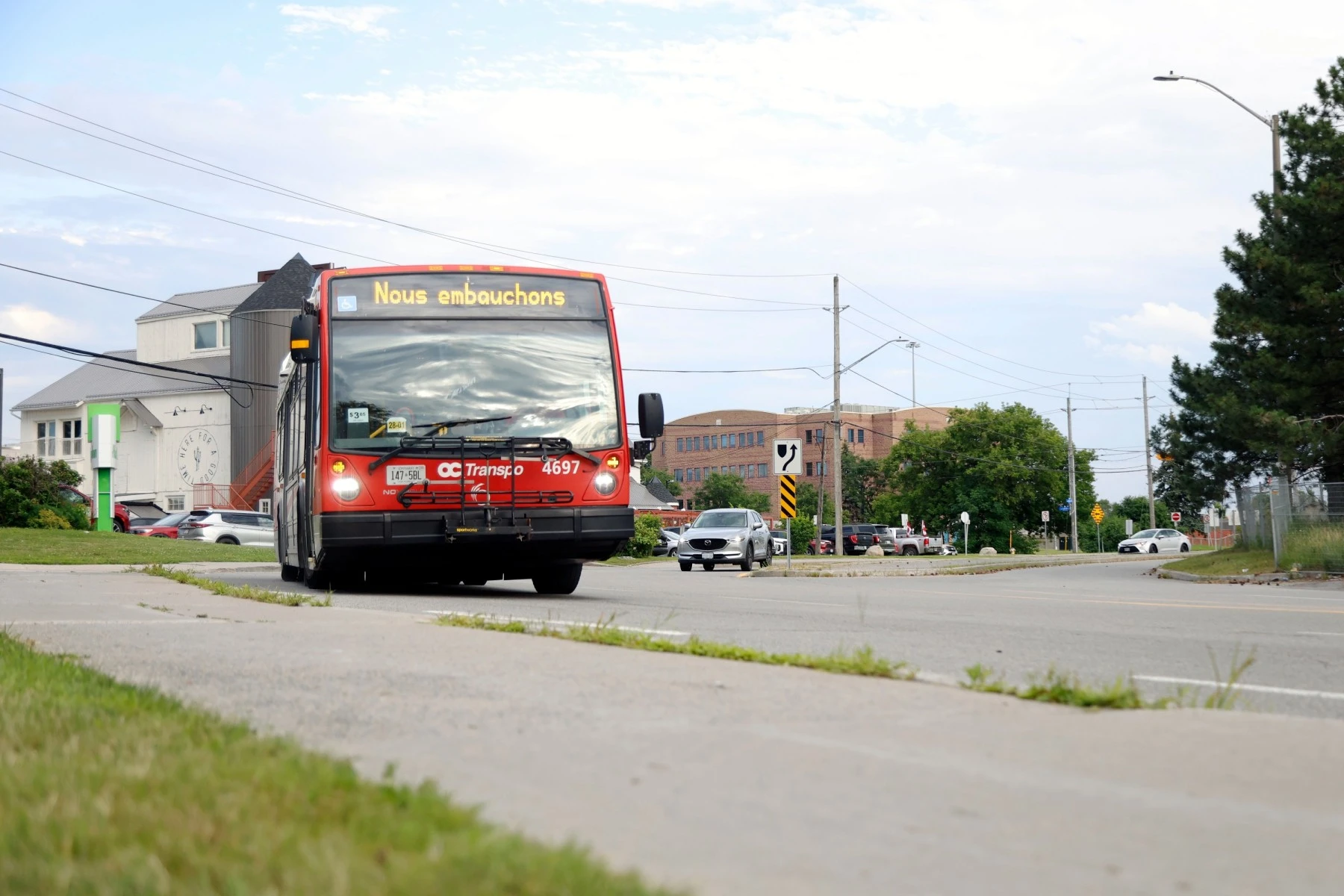
OC Transpo operates the city's buses and the OTrain. The Confederation Line (LRT Line 1) provides east-west service, and the Trillium Line (Line 2) connects downtown areas to Riverside South.
Downtown areas, like the Glebe and Hintonburg, are well-served by transit. Outer suburbs, like Barrhaven and Kanata, rely more on express buses and park-and-ride options.
A monthly OC Transpo pass costs $130.
Traffic congestion can be an issue, especially during rush hour and near the major bridges connecting Ottawa to Gatineau.
Many residents cycle, utilising Ottawa’s extensive bike lanes and gorgeous scenic routes along the Ottawa River and Rideau Canal.
Overall, Ottawa’s transit system is improving with ongoing LRT expansions, but suburban commuters still have longer travel times.
Weather
 Ottawa has cold, snowy winters and warm, humid summers. Winter temperatures often drop well below freezing, especially from December to March. These months bring heavy snowfall and freezing rain. Snow-covered Ottawa is a beautiful winter wonderland for those who enjoy outdoor winter activities. Summers are hot, and spring and fall are mild and enjoyable.
Ottawa has cold, snowy winters and warm, humid summers. Winter temperatures often drop well below freezing, especially from December to March. These months bring heavy snowfall and freezing rain. Snow-covered Ottawa is a beautiful winter wonderland for those who enjoy outdoor winter activities. Summers are hot, and spring and fall are mild and enjoyable.
Overall, Ottawa’s weather can be extreme, with significant contrasts in temperature and conditions.
Choosing the right moving company
 Choosing a moving company is serious, so do proper homework before making any decisions.
Choosing a moving company is serious, so do proper homework before making any decisions.
- Check online reviews to get a sense of customer experiences. Most customers are overly honest when reviewing services or products.
- It’s also important to compare insurance policies from different companies to find the coverage that fits your needs at a reasonable price.
- Make an inventory of your belongings before booking your moving company, so you know what size moving vehicle you'll need.
- While it's tempting to save money and opt for the cheapest movers, it might not always be the best choice. Look for a company with a proven track record and a reputation for professionalism and reliability.
Ottawa moving house checklist
10+ Weeks before your move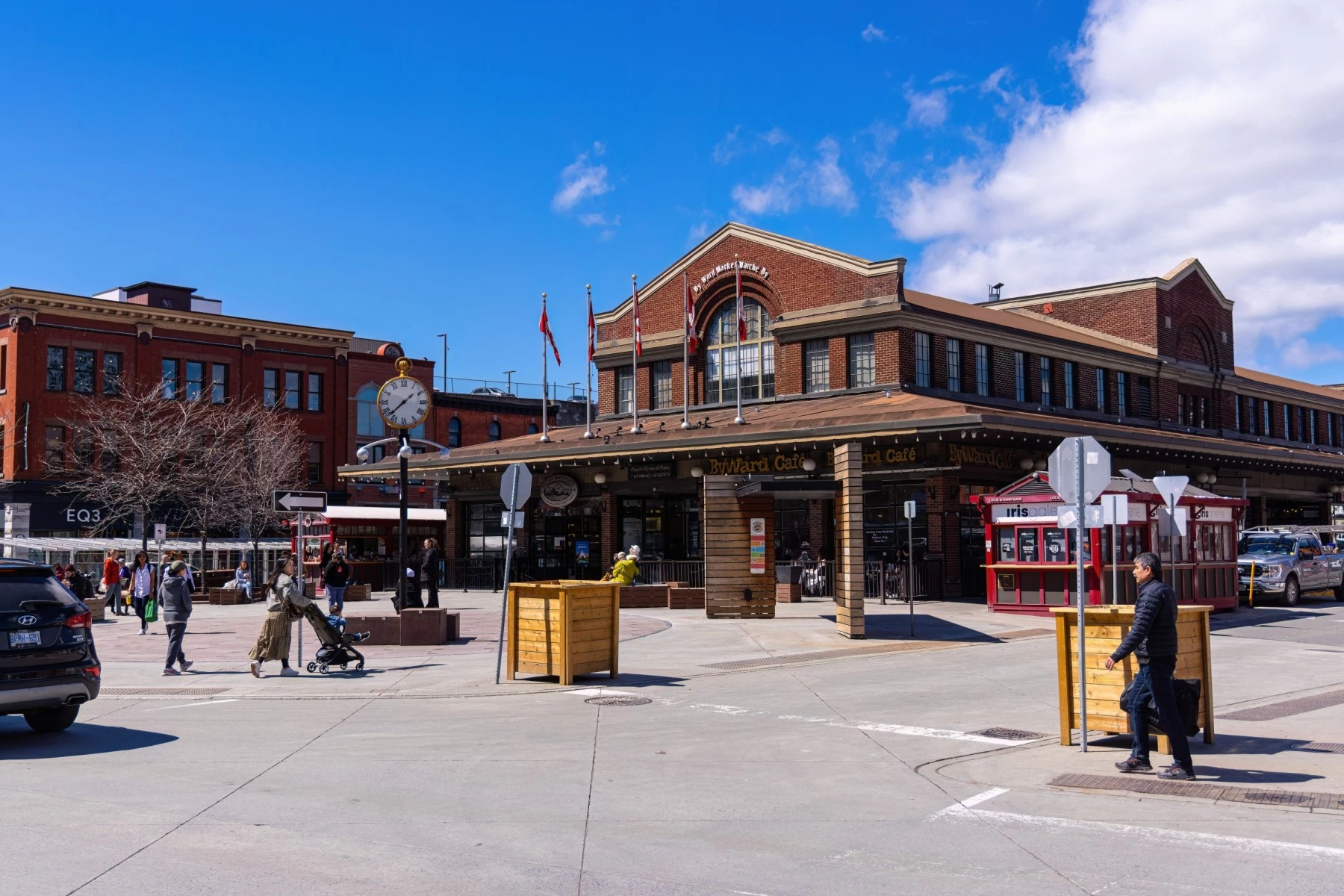
-
Even if you already live in Ottawa, take the time to really get to know Ottawa by spending time in the neighbourhoods you're considering. Think about how you’d feel living in places like the upbeat ByWard Market, laidback Westboro, or Barrhaven suburbia. You might also appreciate historic Sandy Hill, or the tranquility of Old Ottawa South.
-
When choosing, consider your daily routines, access to local amenities, parks, and the convenience of your commute.
-
Set a moving budget to cover expenses like movers, packing supplies, utility setup, and fuel costs, and leave some flexibility for unexpected expenses.
-
Book your movers early to secure your preferred date.
-
If you need extra space, look into storage options in Ottawa.
-
Start decluttering—donate, sell, or recycle things you no longer need.
-
Create a packing plan, outlining what to pack first and the supplies you'll need.
-
If renting, give your landlord the proper notice. In Canada, 12 months' notice is standard.
6+ Weeks before your move
-
Shop for high-quality packing supplies, or order online from a Canadian retailer. For an eco-friendly approach, reuse sturdy boxes and old newspapers. Blankets make great protectors of belongings, and produce boxes from grocery stores are especially strong and weight-bearing.
-
Begin packing nonessential items like books, fine china, and seasonal items.
-
Update your address with utilities, Canada Post, banks, and monthly subscriptions.
-
Take extra care when packing fragile items like antiques, electronics, and artwork.
-
If parking permits are needed for your new home or moving truck, this is the time to arrange them.
4+ Weeks before your move
-
Confirm moving dates with the company. This way, they know exactly when to arrive, and you have peace of mind that they will arrive on that day.
-
Arrange for cleaning services if needed. A flawless move-out clean means getting back your damage deposit.
-
Plan for pet or child care on moving day to keep them safe and out of the way.
-
Inspect your new home for any repairs or cleaning needed before moving in.
2+ Weeks before your move
-
Continue packing and organising. You don’t want to cut any corners at this time.
-
Prepare a bag of essentials for moving day—think toiletries, medications, important documents, chargers, snacks, and water.
-
Update your new address on your driver’s license, car and voter registration.
1 Week before your move
-
Share your moving day plan with your movers. Clear communication with your moving team is essential.
-
Deep clean your old home. Make it cleaner than you think it needs to be.
-
Finish packing any remaining items.
-
Stop watering large plants so that they are lighter for the movers.
-
“Prepare easy-to-freeze meals for the days leading up to moving. This will help you save time and effort during your busiest week.
Moving day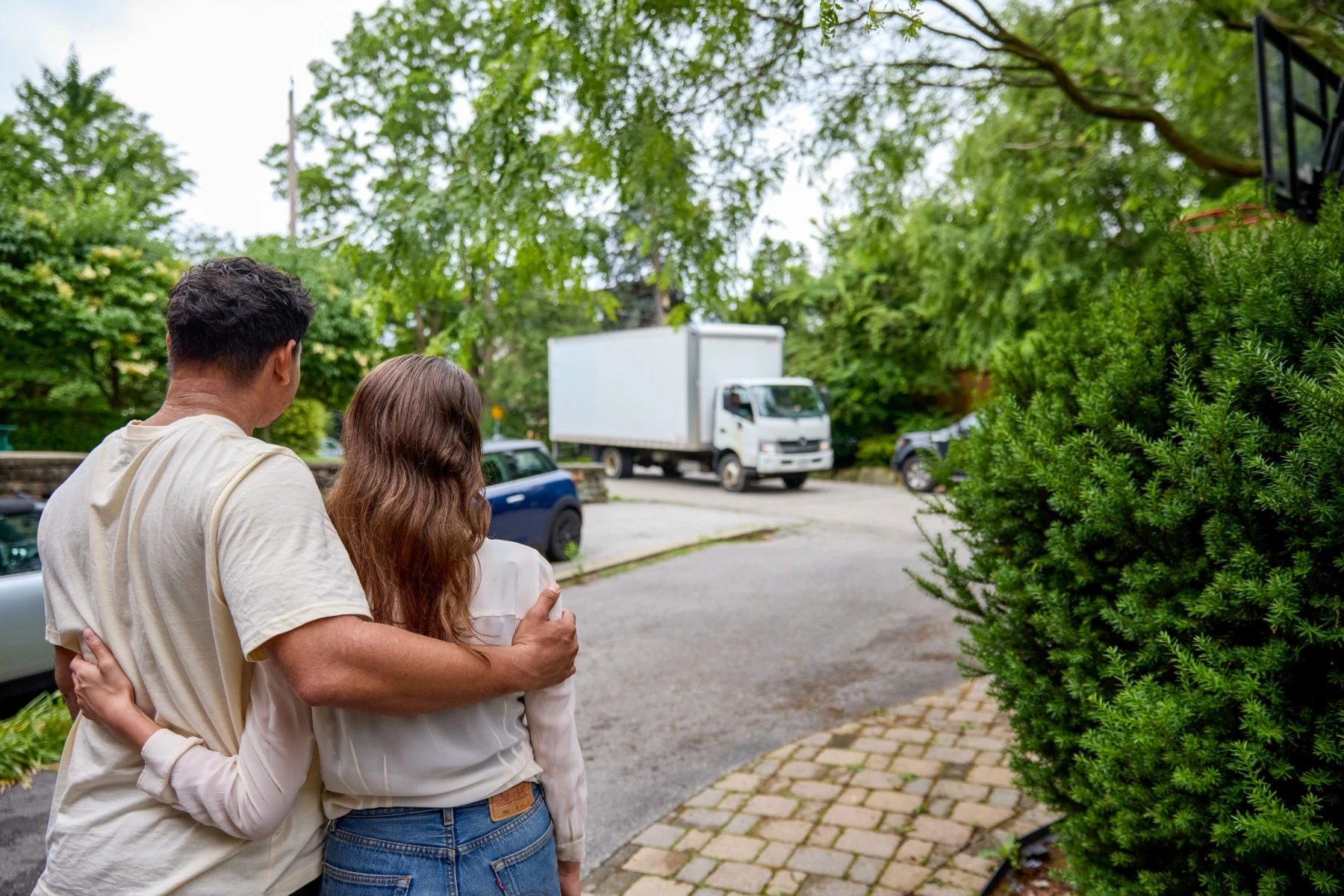
-
Reserve a parking spot for the moving truck if needed.
-
Try not to micromanage. Let your movers work efficiently and trust their expertise.
-
Do a final walkthrough of your old home to double-check for forgotten items.
-
Settle into your new home and start unpacking.
After the move
-
Unpack essentials first. Start by setting up your kitchen, bedroom, and bathroom to avoid losing your mind as you finish unpacking and setting up your home.
-
Make sure all boxes and furniture are placed in the correct rooms.
-
Explore your new neighborhood by grabbing a coffee, walking in the park, and locating nearby services like the post office, rec centre, and library.
Budgeting for movers in Ottawa
 The cost of moving in Ottawa depends on the size of your home and the distance to your new place.
The cost of moving in Ottawa depends on the size of your home and the distance to your new place.
-
A move from a 1-bedroom apartment can range from CA$600 to CA$800.
-
A 4-bedroom house may cost between CA$1,700 and CA$2,800.
Specialty items could mean extra fees, so compare quotes from multiple movers to find the best price. Top Move compares quotes for you, helping you save time and choose the most affordable movers with less hassle.
If you’re purchasing a home, remember to budget for extra costs such as legal fees, inspections, conveyancing, property taxes, and insurance. For renters, expect to pay a damage deposit, usually equivalent to one month’s rent. Don’t forget to factor in expenses for utility setup, packing materials, cleaning services (if needed), and parking permits if necessary.
Hiring movers or DIY? The benefits and challenges of both options
Deciding between hiring movers or tackling the move yourself depends on your budget, time availability, and physical capacity. Both options offer their own benefits and challenges.
Hiring a moving company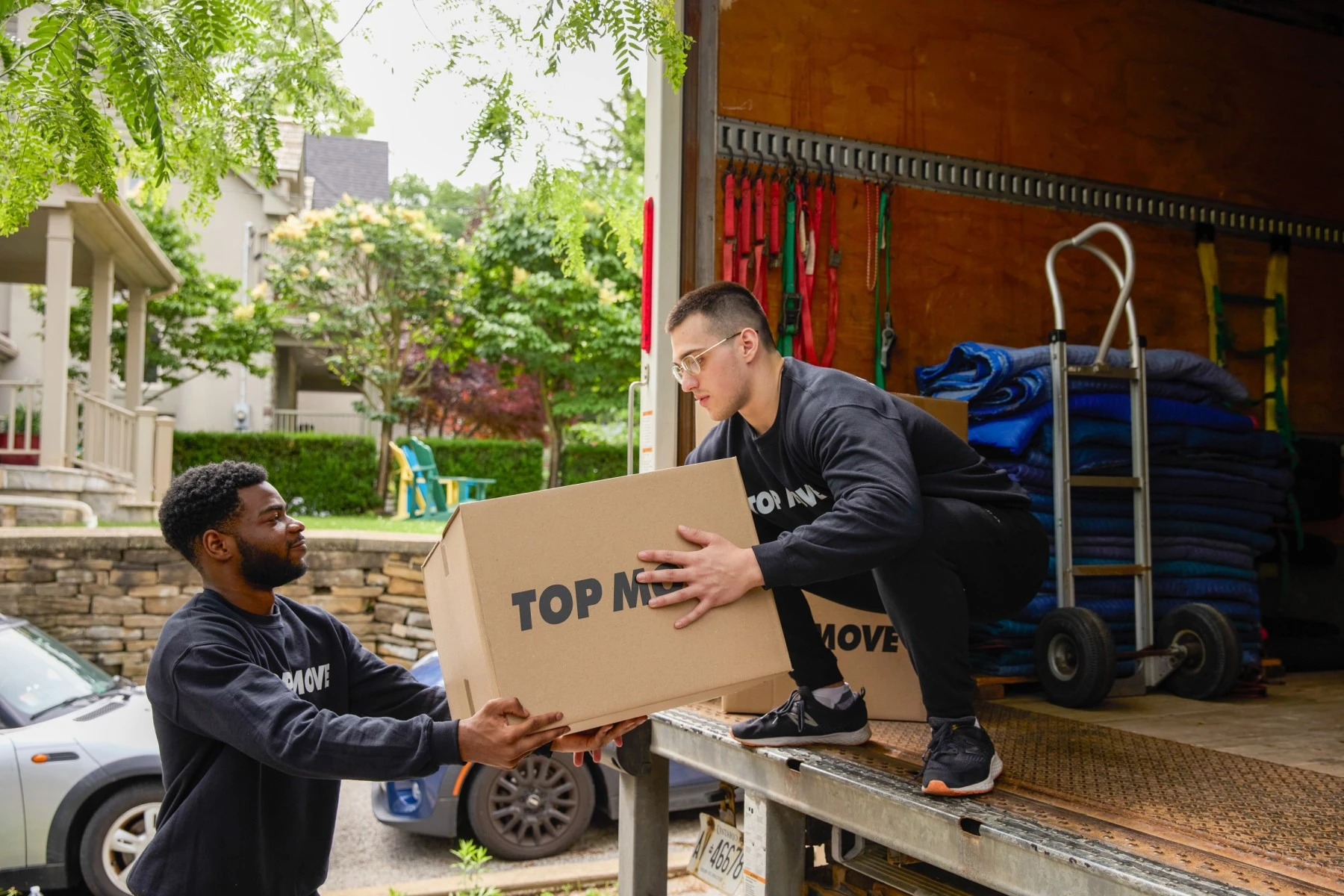
Pros of professional movers
-
Speed and efficiency: Movers are trained to work quickly, which saves you time and effort.
-
Less stress: Moving involves heavy lifting and delicate packing, which professionals handle, leaving you free to focus on other tasks.
-
Peace of mind: Most moving companies offer insurance, so you’re covered if something goes wrong.
-
Specialised skills: Movers are prepared to safely transport fragile items like artwork, glassware, and electronics.
-
Safety: Professional movers reduce the risk of personal injury and damage to your belongings.
If you're looking for reliable movers at competitive prices or need help with specialised moving requirements, Top Move can connect you with trusted professionals to handle the details.
Cons of hiring movers
-
Higher costs: Professional moving services come with a price tag.
-
Additional fees: Extra charges may apply for factors like long distances, narrow entrances, stairs, or elevators.
DIY moving
Benefits of a DIY move
-
Cost savings: Moving yourself is the most economical choice, especially if you live minimally.
-
Complete control: You’re in charge of every step, giving you flexibility and specificity.
-
Flexible timing: You can move when it works best for you, making it ideal for those with unconventional schedules.
-
Fun activity: You can have a moving party with your friends and offer them pizza in exchange for helping.
Challenges of a DIY move
-
Time-consuming: Packing, loading, driving, unloading, and cleaning usually takes longer than expected.
-
Physical strain: Lifting heavy furniture or awkward items can be hard on your body, and you risk injuring yourself.
-
Risk of damage: Without professional expertise, you may not as effectively protect your belongings or yourself.
-
Weather conditions: Ottawa’s harsh winter or hot summer weather can add extra challenges to a DIY move.
If you're pressed for time, concerned about physical strain, or have valuable items requiring extra care, Top Move can help you find the best professionals for the job so you can move without the hassle.
Packing each room efficiently
 A little planning goes a long way when packing for a home move. The trick is to start early and stay organised. Label every box—you really can’t have too many labels. Focusing on one space at a time prevents overwhelm and keeps everything on track. Remember that the secret to excellent packing is decluttering, reducing and minimising your possessions. Guaranteed, you won’t miss or even remember most of your stuff once it's gone.
A little planning goes a long way when packing for a home move. The trick is to start early and stay organised. Label every box—you really can’t have too many labels. Focusing on one space at a time prevents overwhelm and keeps everything on track. Remember that the secret to excellent packing is decluttering, reducing and minimising your possessions. Guaranteed, you won’t miss or even remember most of your stuff once it's gone.
Outdoor areas (garden, shed, and storage)
If possible, tackle this area before winter hits—it’ll save you a lot of hassle.
-
Tools: Sort through your tools and donate any extras. Many local dumps have designated areas for reusable or recyclable items. Pack small tools in sturdy boxes and wrap larger equipment like chainsaws or trimmers in old blankets for protection.
-
Furniture: Disassemble what you can and wrap pieces in blankets to prevent damage. Store screws and hardware in small, labeled bags.
-
Plants and pots: Transport large potted plants separately. Pack smaller plants in sturdy boxes, using fabric to cushion ceramic pots. Avoid watering them a week before the move to keep them lightweight.
Guest rooms
-
Bedding: Pack sheets and blankets in large bags or bins. Label everything so it's easy to set the bed back up.
-
Furniture: If possible, take apart large pieces like bed frames. Keep screws and hardware in labeled bags.
The Office
-
Paperwork: Go through documents, shredding anything unnecessary. Store important papers in a labeled file box and keep essentials in your moving day bag.
-
Electronics: Protect computers and printers by wrapping them in bubble wrap or with towels or fabric for a more sustainable option. Bonus, if you have the original boxes, you can use them for extra security.
-
Furniture: Disassemble desks when possible to save space. Store small office supplies in labeled boxes. Be extra cautious when packing lamps and place them in a sturdy box for extra protection.
Living and dining areas
-
Electronics: Use original boxes for TVs and speakers if you still have them. Otherwise, wrap them in blankets or towels.
-
Furniture: Protect sofas and tables with moving blankets or furniture pads. Disassemble tables if possible to save space.
-
Books and décor: Pack books in small boxes or rolling suitcases to avoid back-breaking loads. Wrap fragile decorations carefully and place them in cushioned boxes.
-
Soft Furnishings: Store cushions, rugs, and throws in large bags or boxes, ensuring they’re not overstuffed.
Main bedroom
-
Clothes: Use wardrobe boxes for hanging clothes and fold the rest into suitcases or bins.
-
Bedding: Pack comforters, pillows, and sheets in large labeled boxes, so your bed is easy to set up after moving into your new home.
-
Furniture: Disassemble large items like bed frames, storing screws and small parts in labeled bags.
-
Personal Items: Pack electronics, books, and smaller belongings in well-labeled boxes. Store valuables like jewelry and watches in secure dividers within your moving day bag. Wrap framed photos in fabric for extra cushioning.
Bathrooms
-
Declutter: Toss expired medications and toiletries. Consider donating unused beauty products and other toiletries to a women’s shelter.
-
Toiletries: Keep liquids in sealed bags to prevent leaks. Pack all toiletries together in one box for easy access. Travel toiletry bags are great for securing small glass containers.
-
Fragile Items: Wrap mirrors and glass containers in towels before placing them in boxes to prevent breakage.
The Kitchen
-
Declutter: Donate unopened pantry items you won’t use, and compost expired food. Repurpose sturdy plastic food containers to pack small, fragile belongings and dried goods.
-
Dishes and glassware: Wrap fragile items in fabric, paper or bubble wrap. Once wrapped, stack plates and bowls, and use dividers for glasses.
-
Food: Try to use up perishables before moving by meal prepping. This way, you will have a bunch of food ready for the days leading up to moving, when you will be the busiest. Pack nonperishable goods in small boxes for easier carrying.
-
Appliances and utensils: Wrap small appliances like toasters or blenders in towels before placing them in boxes. Store utensils and cutlery together in smaller boxes.
Get your full damage deposit back by leaving your old place spotless
 With everything packed up, it’s time for the final deep clean. If you’re a renter, you’ll want to do a thorough cleaning to get your damage deposit back. Your deposit is usually the equivalent of a month’s rent. If you’re tackling this task yourself, here’s how to do it right.
With everything packed up, it’s time for the final deep clean. If you’re a renter, you’ll want to do a thorough cleaning to get your damage deposit back. Your deposit is usually the equivalent of a month’s rent. If you’re tackling this task yourself, here’s how to do it right.
Work from top to bottom
Start by dusting ceilings, light fixtures, and vents before moving down to walls, windows, and frames. Clean windows with soapy water first, followed by a light mist of vinegar and water for a streak-free finish. Wash the walls with warm water and natural soap, like castile soap.
Deep clean the kitchen
The kitchen is one of the most time-consuming areas to clean. Wash all surfaces, including countertops, sinks, and appliances. For stubborn grease, a baking soda and vinegar paste works wonders.
Look out for the hidden grime traps, like behind the fridge and under the stove. Check under the sink for mold. If you spot any, scrub with commercial dish soap, then spray with vinegar or hydrogen peroxide. Be sure to dry everything thoroughly, using a space heater if necessary.
Make the bathroom sparkle
Bathrooms usually require some serious scrubbing. Start with tile and grout, using a vinegar and baking soda mix, and an old toothbrush for the detailing. Wash down mirrors, sinks, and countertops, giving extra attention to the toilet and shower. Polish fixtures for a final touch, and run the bathroom fan to keep moisture at bay.
Clear out all trash
Before wrapping up, make sure you’ve dealt with every last bit of garbage. You don’t want to walk through a freshly mopped space to take out the trash. Recycle whatever you can.
Floors matter a lot
Vacuum thoroughly, including corners and high-traffic areas. Mop hard floors with hot soapy water and a rinse for a perfect finish.
Refresh the carpets
If carpets have discolouration, stains or odors, consider renting a steam cleaner or hiring professionals, especially for larger spaces.
Do a final walkthrough
Once everything is dry, remove your shoes and inspect the space to check that nothing was missed. Since landlords can be picky, snapping photos of your cleaned space can serve as proof of cleanliness and help you get your full deposit back.
How much does storage cost in Ottawa?
 Here are some reasons you might need a storage unit:
Here are some reasons you might need a storage unit:
-
Downsizing to a smaller home.
-
Waiting for renovations to be completed.
-
Keeping precious and sentimental belongings you’re not ready to part with but currently don’t have space for.
Storage units offer flexibility, letting you choose the right size and rental period depending on your needs. In Ottawa, costs vary based on factors like:
-
Unit size
-
Location
-
Features (such as climate control)
-
Rental duration. Generally, longer rental periods come with lower monthly rates.
How much does storage cost?
-
Medium-sized units: CA$160 per month
-
Large units: CA$240+ per month (higher for premium features)
-
Mobile storage: Prices vary based on container size, rental time, and transport fees
-
Insurance: Costs depend on coverage level and provider
Alternative storage options
If you want a more flexible storage solution, opt for mobile storage. A company drops off a storage container at your location, you load it at your convenience, and they transport it to a facility. This can be a cost-effective choice, but you’ll need adequate space to keep the container while packing. Another option is purchasing a shipping container for on-site storage.
Insurance considerations
Most storage facilities offer basic insurance. If you’re storing valuable or irreplaceable items, consider upgrading your coverage. For maximum security, a safety deposit box at a bank may be a better option for smaller treasures and high-value items.
Unique moving situations
 Some moves require extra planning, especially when relocating with pets, children, or elderly family members. Here’s how to make the transition as smooth as possible.
Some moves require extra planning, especially when relocating with pets, children, or elderly family members. Here’s how to make the transition as smooth as possible.
Moving with pets
Moving day can be overwhelming for pets because they worry about being left behind. Keeping their essentials handy will help them feel more secure. Pack a dedicated pet bag with:
-
Food and water
-
Bedding or blankets for comfort
-
A sturdy carrier or crate
-
Favorite toys
-
Any required medications and vet records
-
Treats for reassurance
For long-distance moves or multiple pets, consider hiring a pet transport service. This guarantees their safety and comfort while allowing you to focus on other moving tasks.
Moving with children
Relocating can be both exciting and emotional for kids. While they may look forward to a new home, they might also struggle with leaving familiar places and friends behind.
To ease the transition:
-
Involve them in packing by letting them decorate and label their own boxes.
-
Pack a small bag with their favorite toys, books, or comfort items.
-
Use the opportunity to teach them simple organising skills, like folding clothes.
-
Turn cleaning their old room into a fun game with small prizes.
Before moving day, explore the new neighborhood together. Visiting parks, playgrounds, ice cream shops, or toy stores can help build excitement and make the new place feel familiar.
Moving with elderly family members
When relocating with older family members, especially those with mobility challenges, it’s also wise for you to locate nearby medical centres, pharmacies, and hospitals for added peace of mind.
There are extra steps to provide the care they need. Make sure they have a comfortable place to rest during the move, and pack a personal bag with medications, important documents, water and other necessities.
If they rely on mobility aids such as walkers or wheelchairs, confirm that the new home is accessible before moving day. If modifications are needed, arrange them in advance.
Many modern buildings in Canada include features like:
-
Ramps and lifts for mobility devices.
-
Wider doorways to allow for easy movement in and out of spaces.
-
Step-free entrances.
-
Automatic doors.
-
Grab bars in bathrooms and hallways.
-
Lowered countertops and accessible sinks.
-
Non-slip flooring in busy areas.
Finding the right moving company in Ottawa
 Relocating to or within Ottawa is an exciting step, but choosing a reliable moving company can be overwhelming. There are so many choices. The good news is that you don’t have to do it alone. Top Move helps you connect with experienced, professional movers, so you can save money and rest easy, knowing that your move will go smoothly from start to finish.
Relocating to or within Ottawa is an exciting step, but choosing a reliable moving company can be overwhelming. There are so many choices. The good news is that you don’t have to do it alone. Top Move helps you connect with experienced, professional movers, so you can save money and rest easy, knowing that your move will go smoothly from start to finish.
What do our customers say?









![The cost of living in Ottawa [2025] The cost of living in Ottawa [2025]](https://cdn.topmove.ca/image/blog/05c56698337852b128efa8b1144e6466.jpeg)
![The cost of living in Ottawa [2025] The cost of living in Ottawa [2025]](https://cdn.topmove.ca/image/blog/c761f4e001bbc63ac9a49e0c0599d596.jpeg)




















